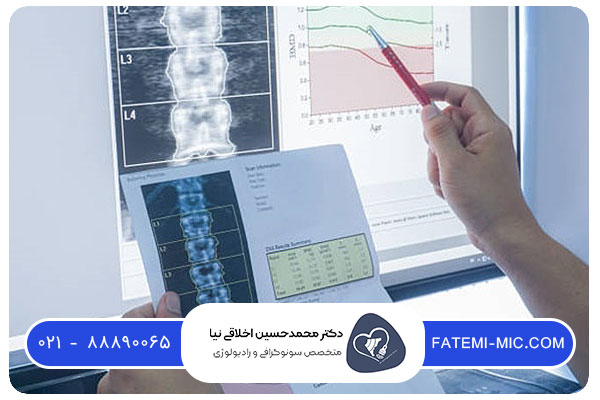What is bone density and how is it done?
What is bone density and how is it done?
Blog Article
Bone density measurement is a type of test through which diseases such as osteoporosis can be diagnosed. In this test, a very low dose of ionizing radiation is used along with X-rays to prepare images of the spine, pelvis, and knees. To measure bone density and get accurate results, visit Fatemi Ultrasound and Radiology Center.
The images obtained through this test are very useful in assessing risks that threaten bone health. Through radiology images, doctors can obtain the amount of soft and hard tissue and check the density of minerals in the bones. Until the end of the article, what is bone density and how is it done? Be with us.

What is bone density?
Bone densitometry is an imaging method that uses X-rays to examine bone tissue. Some of these rays are absorbed by soft tissue, but hard tissues will not absorb the rays.
Bone densitometry is an invasive method that is very useful for early diagnosis and treatment. By separating the amount of hard and soft tissues, a number of bone density is obtained. This number indicates the density of minerals in the bones.
This type of imaging is mostly used for hip, thigh and knee areas, and doctors use CT scan and ultrasound to measure bone density. However, imaging is more accurate and useful for diagnosing osteoporosis.
How is bone density done?
Two types of scanning devices are used to measure and evaluate the level of bone density, and the results can be effective for checking the level of osteoporosis and the need for treatment.
Central scanners: It is used to measure the density of minerals in the central skeletons of the body, which have vertebrae and hips.
Peripheral scanners: this type of scanners are also used for wrists, feet, heels and fingers. This test is performed in central scanners in such a way that the patient is asked to sit inside the scanner. Then, the device scanner is placed in the part of the body that needs to be measured, and through that, doctors can easily treat these diseases early.
Due to the sensitivity of the results of the bone density test, we recommend that you visit the Fatemi Ultrasound and Radiology Center with the best imaging and ultrasound equipment to receive the results and accurate interpretation.
Applications of bone density
Bone density measurement is used to check density and diagnose osteoporosis. The risk of developing osteoporosis increases with age. Women are more prone to this condition due to menopause, while men are rarely affected.
On the other hand, children who suffer from osteoporosis due to heredity or the difficult conditions of the mother's pregnancy, should be tested as soon as possible. Through this test, people can recognize their problem much ahead of time and at the initial stage.
Bone density measurement is not done for all bone tissues in the body and is often used for the spine and hips. In children and some adults, it is also used to screen for low bone mass in the forearm through peripheral devices such as ultrasound or X-ray.
For whom is bone density recommended?
Bone density is recommended for people over the age of 35 and people with the following problems:
1- Postmenopausal women who have symptoms of osteoporosis. The body of this group of women does not produce estrogen, so they are more prone to osteoporosis and other diseases.
2- People who have a family history with symptoms of osteoporosis and joints.
3- People who have clinical signs and symptoms of complications such as rheumatism, liver diseases and arthritis, and their bones are permanently weakened.
4- Using high-dose thyroid drugs, anticonvulsants and strong painkillers will destroy the bone structure over time. As a result, the doctor prescribes bone densitometry to ensure bone examination and evaluation.
5- People suffering from hyperthyroidism.
6- People who have a history of trauma, accident, etc.
7- Patients who have a history of radiography and their tests confirm osteoporosis.
8- Examining fracture and density of bone minerals before and after treatment
9- People whose height is shorter than one inch.
10- Those people who experience unbearable back pain.
The most important complications of bone density
People who want to do a bone density test for the first time are stressed and anxious because of the fear of it, but the remarkable thing is the absence of pain during the imaging.
Due to the use of radioactive rays, some heat may be felt on the skin. On the other hand, due to the harm caused by this radiation on the fetus, it is forbidden to perform this test for pregnant women.
Summary of contents
Bone density is an important test to evaluate the density of minerals in bones to prevent diseases such as osteoporosis. Testing at the age of 35 is very important and can prevent various bone diseases.
Bone densitometry is not done for all bone tissues, and only parts of the spine, thigh, and hip are tested. Due to the sensitivity of the results of this test, please refer to Fatemi Ultrasound and Radiology Center to perform it.